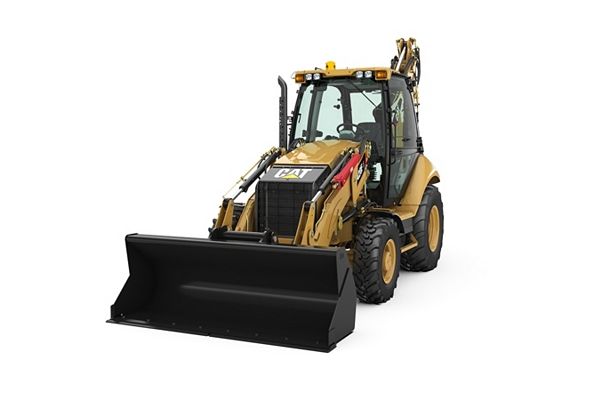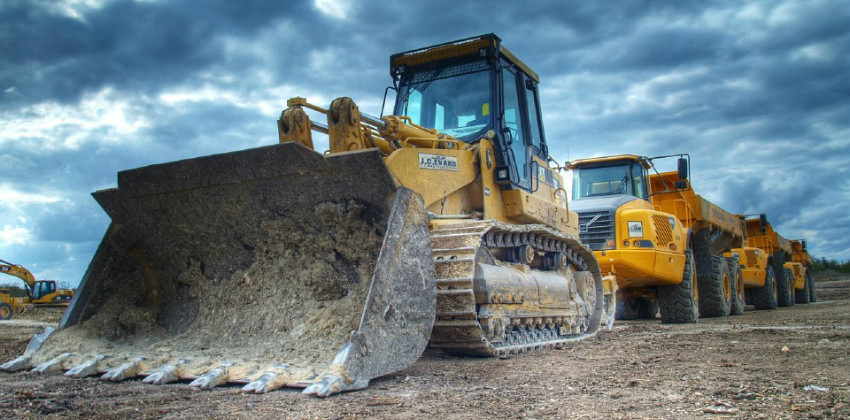Forklift Rental Services for Industrial and Commercial Use
Wiki Article
A Comprehensive Guide to Heavy Devices Used in the Building Market
In the realm of building and construction, the usage of heavy equipment stands as a foundation for performance and performance. From towering cranes to earth-shaking excavators, each piece serves a vital purpose fit the physical landscape around us. Recognizing the nuances of these makers, their functions, and the tactical factors to consider behind their option can suggest the distinction between a job's success and failure. As we begin on this expedition of the thorough guide to hefty tools used in the building sector, we will dive into the details that govern their operation, maintenance, and the advancing landscape of technical improvements that continue to redefine the boundaries of building abilities.Types of Hefty Tools
Within the building and construction sector, a diverse variety of hefty equipment is utilized to effectively perform numerous tasks. Excavators are among one of the most frequently made use of kinds of hefty tools. These flexible makers are geared up with a cab, container, and arm placed on a turning system, allowing for excavating and moving materials with accuracy. Bulldozers, with their wide tracks and enormous blade in the front, are essential for tasks such as grading, clearing, and pressing hefty materials. Cranes play an important role in training and moving heavy products on building sites. Tower cranes are typically made use of for tall structures, while mobile cranes are functional and can be conveniently transported to different places. In addition, discard vehicles are important for carrying products such as sand, crushed rock, and debris around building and construction sites. Their ability to carry hefty tons makes them vital for keeping a smooth operations. Each sort of heavy equipment plays a crucial duty in making certain that building and construction tasks are completed successfully and properly.Features and Applications
Among the vital elements in recognizing the effectiveness of heavy equipment within the building market is analyzing their details functions and applications. These devices are designed to carry out a range of tasks that are vital for construction tasks of all sizes. Excavators, for example, are commonly used for digging trenches, structures, and openings, while excavators succeed in cleaning and grading land. Cranes are vital for lifting and moving heavy materials on building websites, and unload vehicles are important for transporting materials like dust, gravel, and sand. Furthermore, loaders are functional machines that can handle jobs such as product excavation, grading, and handling.The applications of heavy tools extend beyond conventional building and construction jobs. As an example, small track loaders are excellent for operating in harsh terrains, making them ideal for landscaping and agricultural projects. Skid guide loaders are commonly used for tasks calling for ability to move in tight rooms, such as interior building and construction or demolition jobs. Comprehending the features and applications of heavy devices is vital for using these makers effectively in numerous building circumstances.
Factors To Consider for Equipment Choice
When selecting hefty tools for building and construction tasks, cautious consideration of numerous aspects is crucial to make sure optimal performance and performance. The initial consideration is the certain requirements of the task. Recognizing the extent, dimension, and complexity of the building job will certainly assist determine the type and dimension of equipment needed. Secondly, the surface and atmosphere where the devices will be utilized must be considered. Devices suited for rough terrains may differ from those required for city setups. Price is one more vital element. Stabilizing the initial purchase cost with upkeep and operating costs over the tools's lifespan is essential. Additionally, the accessibility of extra parts and provider must be thought about to reduce downtime. Security attributes, operator training requirements, and compliance with policies are non-negotiable aspects that impact equipment option. Last but not least, assessing the track record and reliability of tools producers can help make certain toughness and performance. By meticulously weighing these considerations, building companies forklift rental can choose the appropriate hefty equipment for their jobs, leading to successful results.Maintenance and Safety And Security Practices
Executing rigorous maintenance and safety and security practices is paramount in the construction sector to ensure the long life of hefty equipment and the security of workers. Appropriate training for devices drivers is necessary to decrease the risk of mishaps.This includes the use of personal protective equipment, such as tough hats, gloves, and steel-toed boots. It is vital to conduct detailed pre-operational checks prior to using any type of tools to verify that it is in great functioning problem.

Emerging Fads in Building Equipment
To stay ahead in the construction market and adapt to advancing requirements, companies are increasingly transforming towards integrating cutting-edge modern technologies and developments in their heavy devices, reflecting the emerging fads in construction tools. One noticeable fad is the integration of telematics systems in building machinery. These systems permit real-time surveillance of equipment efficiency, place tracking, and even anticipating maintenance, improving functional performance and lowering downtime.
Another significant pattern is the surge of independent building and construction devices. From self-driving dump vehicles to automated bulldozers, these devices are transforming building sites by improving efficiency, precision, and safety. Additionally, making use of drones for evaluating, mapping, and progression monitoring is becoming extra common, supplying beneficial understandings and enhancing operations.
On top of that, the building sector is increasingly discovering the utilization of 3D printing innovation to create elements and even whole frameworks on-site, conserving time and prices while enabling higher layout adaptability. As innovation continues to development, these emerging patterns are positioned to form the future of construction devices, driving innovation and performance throughout the market.
Final Thought
In verdict, heavy tools plays an essential function in the building and construction sector by supplying the required power and effectiveness to finish numerous tasks. Recognizing the different sorts of tools, their functions, and applications is essential for selecting the best devices for the work. Maintenance and security methods are important to make certain the longevity of the devices and the safety of employees. Staying on top of emerging trends in construction devices can help firms remain affordable in the sector.
Applying rigid upkeep and safety and security techniques is paramount in the construction sector to guarantee the longevity of hefty tools and the security of personnel.To remain ahead in the construction market and adapt to progressing demands, business are progressively transforming in the direction of incorporating cutting-edge technologies and technologies in their hefty tools, showing the arising patterns in building and construction equipment.In conclusion, hefty equipment plays a vital duty in the building and construction industry by offering the essential power and effectiveness to complete different jobs. Recognizing the various types of devices, their functions, and applications is necessary for selecting the appropriate equipment for the task.
Report this wiki page